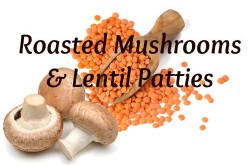By: Amanda Belo
Shopping for food when you’re making a conscious effort to prepare healthy meals can be confusing. With all brands and products vying for your attention as you peruse the aisles or browse the item descriptions online, it’s hard to know how to tell truthful claims from advertising trends! Not to worry – we’ve got the explanations below.
We’ve all seen the packaging claims that try to influence our buying decisions. Phrases like “fat free”, “low calorie”, “less sugar” or “natural” are plastered everywhere, but what exactly do they mean? Does “low-sodium” automatically mean something is healthy?
Don’t be fooled! Below, we’ve decoded some common food packaging claims to help you shop smarter so you can eat healthier:
Natural – Nothing artificial or synthetic has been added
Organic – Contains a minimum of 95 percent organic ingredients (excluding salt and water)
Non-GMO – Produced without bioengineering
Gluten-Free – Contains less than 20 parts per million of gluten
Low-calorie – Contains less than 40 calories per serving
Low-cholesterol – Contains 20 mg or less of cholesterol, and 2 g or less of saturated fat per serving
Reduced – Contains 25% less of the specified nutrient or calories than the usual product
“Good source of “– Provides at least 10% of the Daily Value of a particular nutrient per serving
Calorie-free – Contains less than 5 calories per serving
Fat-free / Sugar-free – Contains less than ½ gram of fat or sugar per serving
Low-sodium – Contains 140 mg or less of sodium per serving
“High in” or “excellent source of” – Provides 20% or more of the Daily Value of a specified nutrient per serving
Light/Lite – The total amount of calories is decreased by at least 33.3 %, or the fat content is reduced by at least 50% compared to a standard or original version.
Don’t forget there’s always the option to choose foods made with whole ingredients! Adding more whole foods to your diet to get the nutrition you need can be as easy selecting fresh fruit and vegetables instead of flavored fruit or vegetable food; whole grains instead of refined grains; chicken breast instead of processed, breaded, chicken nuggets; a baked potato instead of potato chips; steel-cut oatmeal instead of cereal; hummus instead of mayonnaise; or, brown rice instead of white rice.
What are your top tips for understanding food labels?
Tell us in the comments!
Resources:




Comments (0)